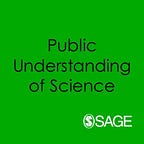Book review
The Beauty of Chemistry. Art, Wonder and Science
Review by Jean-Baptiste Gouyon
The text moves effortlessly from textbook chemistry to evocations of key episodes and actors in the history of this science.
Part coffee-table book, part popular science text, The Beauty of Chemistry could be a model scientific volume for non-specialist readers, from age 12 and above. Not only does it convey knowledge about chemistry in a very accessible way — I learned quite a bit reading it — but, more importantly, it invites readers to share in chemists’ love of their discipline and what excites them about it.
Science communication is a conversation meant to promote mutual understanding between scientists and lay people. Such a conversation is a necessity for the emergence and consolidation of a public culture of science. But it takes two to converse. In this book, non-scientists are given a voice through authors one would not immediately label as scientists — Primo Levi, Thomas Mann, Thomas Pynchon and others — who contribute to placing chemistry in culture as one of the pursuits available to us, and a powerful one, to figure out our place in the universe.
An attractively illustrated text, The Beauty of Chemistry allows readers to see for themselves and share in the visual amazement that changes in the structure of matter procure. They thus — vicariously — take part in the sensual experience of practising chemistry. Chemists, Ball tells us, like other scientists, “seem guided by impulses beyond the purely intellectual”. But, more than other scientists, they “display the greatest creativity: the urge to make” (original emphasis).
Chemistry is about stuff, producing, transforming stuff. Chemists will certainly derive intellectual satisfaction from their success in building, say, new molecular structures. But, and perhaps even more so, they will obtain sensual and aesthetic pleasure from it as well. For chemists, Balls tells us, are ‘ousiophiles’ from the Greek ousia, essence, substance. Ousiophiles “delight in tangible material, in texture, and heft, in lustre and pliancy. They want to touch and feel things, to smell and taste them’”.
There is in chemistry “a valid notion of molecular aesthetics: the issue of how aesthetically pleasing molecules may be” (original emphasis). Look no further than Francis Crick and James Watson who privately declared the double-helix “beautiful”. Ball quotes Fraser Stoddart, 2016 Nobel laureate in Chemistry, who elaborates:
For some chemists, beauty lies in the shape and clarity of a crystal or in the colour or texture of a pigment. For others it is expressed by synthetic molecular structures in the shape of the Platonic or Archimedean solids, such as cubane, dodecahedranes, and buckminsterfullerene, prized for their symmetry, simplicity, and uniformity. These structures — and many others into the bargain — are simply beautiful and beautifully simple.
Inviting readers to share in this aesthetic appeal, wondrous photographs by Wenting Zhu and Yan Liang introduce us to chemists’ visual delights. From bubbles to the beautiful weirdness of chemical gardens, through to crystals and ethereal precipitates, this book is a feast of bright colours and surprising shapes.
Many of the photos originated in the project, Envisioning Chemistry, supported by Science Communication China and the Chinese Chemical Society, and were all taken in a laboratory environment; they offer an enhanced glimpse of the visual culture of chemistry. Amongst them, pictures of such mundane items as a candle flame, petals, snowflakes, bubbles in a soft drink, or the magnified surface of a seashell are so many photographical substantiations of Ball’s assertion that science does not disenchant the world but, on the contrary, “re-enchants” it: its practice “requires a willingness to find strangeness and surprise in the mundane”.
Philip Ball’s prose is a treat. An ode to the spirit of the Renaissance, it demonstrates that science can be approached as a literary object in its own right without diminishing the text’s epistemic value. The Beauty of Chemistry contains ten chapters, each centred on the visual signature of chemical processes. Bubbles, crystals, precipitates (the coalescence of a solid substance out of a solution), flames, etc., are so many landmarks delineating a conceptual map of chemistry for the non-initiated.
Discussions of these visual signs, some of them bright and shiny, lead to detailed yet very accessible explanations of key chemical processes such as redox reactions, flocculation, crystallisation, or such notions as entropy. The text is light on chemical equations and moves effortlessly from textbook chemistry to evocations of key episodes and actors in the history of this science, through to reminders of the science’s presence, and the phenomena it investigates, in our everyday lives. Citations from literary writers, foremost amongst them Primo Levi (himself a chemist but also a noted author), perfect the text as a convincing demonstration that to distinguish between arts, humanities and science is irrelevant. We will need all of them if we are to come closer to capturing and making sense of the human condition.
Jean-Baptiste Gouyon is Associate Professor in Science Communication in the Department of Science and Technology Studies at University College London. His research focuses on the history of public displays of scientific and technological knowledge in visual media. His publications include BBC Wildlife Documentaries in the Age of Attenborough (Palgrave, 2019).
